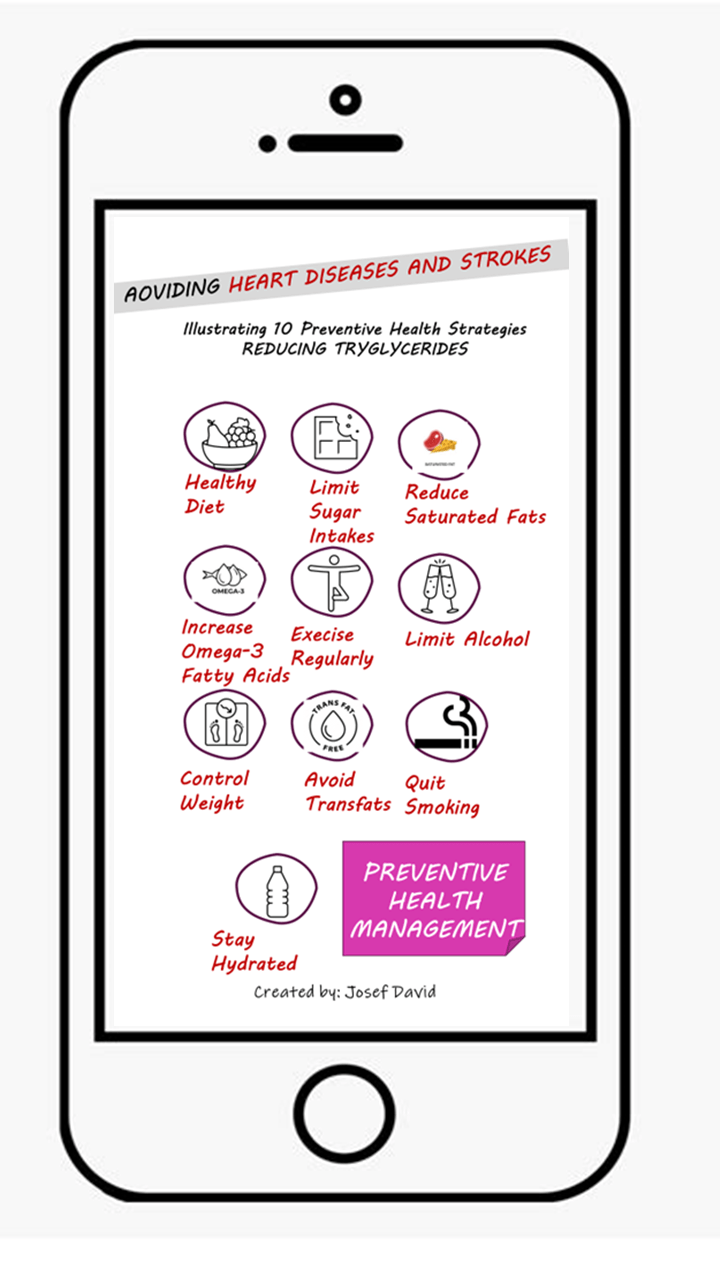What are Triglycerides?
Triglycerides are a type of fat (lipid) found in your blood. When you eat, your body converts any calories it doesn’t need to use right away into triglycerides. They are then stored in your fat cells and later released for energy between meals. High levels of triglycerides in the bloodstream have been linked to atherosclerosis and, by extension, the risk of heart disease and stroke.
Why Must Triglyceride Levels be Kept in Check?
Maintaining healthy triglyceride levels is crucial for overall health and wellbeing. Elevated triglyceride levels can lead to conditions such as heart disease, pancreatitis, obesity, and type 2 diabetes. Furthermore, high triglyceride levels often accompany other conditions that increase the risk of these diseases, such as high low-density lipoprotein (LDL) cholesterol levels (the “bad” cholesterol), low high-density lipoprotein (HDL) cholesterol levels (the “good” cholesterol), and high blood pressure.
Illustrating 10 Health Strategies to Maintain Triglyceride Levels Under Control:
1. Healthy Diet: A diet rich in fruits, vegetables, whole grains, lean proteins, and low-fat dairy can help lower your triglyceride levels.
2. Limit Sugar Intake: Excessive sugar intake can increase your triglyceride levels. Try to limit your consumption of sugary drinks and sweets.
3. Reduce Saturated Fats: Saturated fats found in red meat and dairy products can raise your triglycerides. Opt for lean meats and low-fat dairy products instead.
4. Increase Omega-3 Fatty Acids: Foods like salmon, mackerel, albacore tuna, flaxseeds, walnuts, and canola oil are high in omega-3 fatty acids which can lower triglyceride levels.
5.Exercise Regularly: Regular physical activity can lower triglycerides and boost “good” cholesterol. Aim for at least 30 minutes of physical activity most days of the week.
6.Limit Alcohol: Even small amounts of alcohol can significantly increase triglyceride levels.
7. Control Weight: Losing even a small amount of weight, if you’re overweight, can help lower your triglycerides.
8. Avoid Trans Fats: Trans fats, often found in fried foods and commercial baked goods, can raise your triglyceride levels. Read food labels carefully.
9. Quit Smoking: Smoking can increase your triglycerides and lower your “good” cholesterol, thereby increasing your risk of heart disease.
10. Stay Hydrated: Drinking plenty of water throughout the day helps to flush toxins from the body, including excess triglycerides.
Conclusion and Next Steps:
In conclusion, maintaining healthy triglyceride levels is an essential part of overall health and wellbeing. By implementing these strategies into your daily routine, you can effectively manage your triglyceride levels and reduce the risk of associated health conditions.
However, it’s important to remember that everyone is different, and what works for one person may not work for another. Therefore, it’s always a good idea to consult with a healthcare professional before making any significant changes to your diet or lifestyle.
The next step would be to get regular check-ups to monitor your triglyceride levels and other aspects of your health. This will help you stay on top of any potential issues and make necessary adjustments to your health strategies as needed. Remember, prevention is always better than cure!
